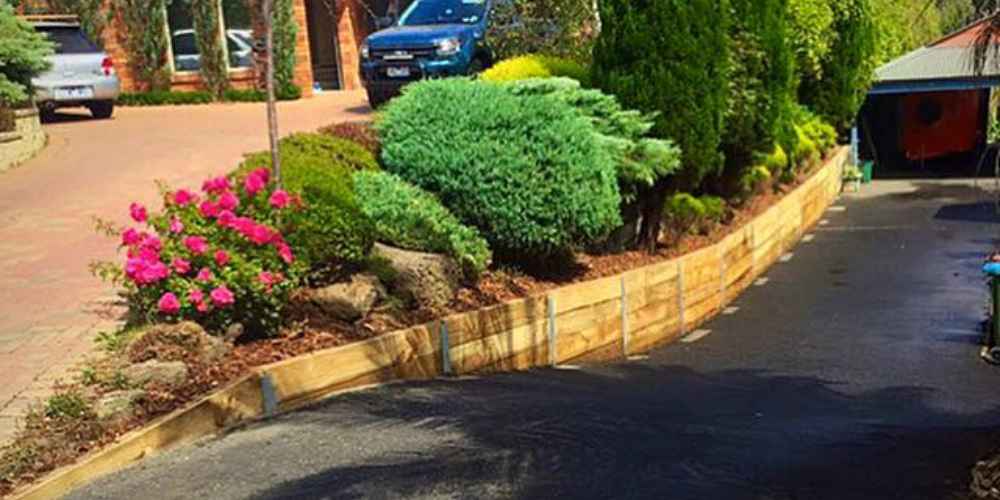Retaining Walls and Landscape - Why Should They Go Together?
Retaining walls are often used to support a garden or landscaping. Retaining wall contractors uses this design to isolate the land from eroding soil, often caused by water flowing toward the garden. If you have enough soil to keep the ground eroded, then it would be much better to place a retaining wall around the yard to keep the soil from flowing away.
Even though it is hard for some people to believe, there are many reasons why homes need both a retaining wall and a landscape. If you have never heard of a retaining wall before, it is a “wall” specifically to ensure that snow doesn’t creep into your home. It keeps the wind from coming in too quickly and helps prevent land erosion. Though they can be beautiful sometimes, these walls can also be an eyesore if not constructed properly. The landscape could mean different things depending on where you live. Still, it typically covers everything within the four corners of your property, including trees, bushes and flowerbeds.
Join us as we dig deeper into the best reasons why landscape and retaining walls should go together.
Table of Contents

Benefits of Having Retaining Walls To Your Landscape
Have you ever wondered why homes should have retaining walls and landscape? It’s a question of function. The concrete block structure of your home is a box. That box is surrounded by open space, a vital part of any city or suburban landscape design. When building a new home, the builder needs to ensure your house’s layout is consistent with this layout.
You can keep your landscape looking great.
You may want a retaining wall in the first place. Let me tell you about it! A retaining wall prevents erosion, landslides, and water damage to your home. They’re a great way to establish a landscape design and make your yard look more professional.
Your yard will look green and neat.
With retaining walls, you can get rid of soil erosion and maintain the look and feel of your yard. The primary purpose of retaining walls is to prevent soil erosion, preventing runoff onto neighbouring property. A good way a retaining wall accomplishes its goal is by creating a barrier that allows water flow while supporting the earth’s weight above it.
You'll be able to keep it clean, too.
Retaining walls are one of the best ways to keep your yard clean, beautiful and worry-free. If you have a heavy rain storm or have drains that flood your front yard when they’re open, having a retaining wall can help keep things under control.
Retaining Walls vs Fence - How Do They Differ?
Scope of function
The main difference between a fence and a retaining wall is that a fence typically only goes around the perimeter of your property. However, you have many trees or other landscaping around your yard. In that case, it may be necessary for your fence to extend beyond this boundary. A retaining wall has no limitations on its design; therefore, it can be made of many different materials and styles.
Cost
Consider many things when installing a retaining wall or fence. One of the most important things is cost. A small fence can be installed for less than $100, while a large retaining wall could cost more than $10,000! If you have limited funds available, it may not make sense for your project (or if another option meets all of your needs).
Maintenance
Another difference between fences and retaining walls is permanence; both have different designs, but this does not mean either will last forever without maintenance over time. Retaining walls tend toward permanence in their designs. In contrast, fences are more temporary solutions because they are smaller than larger structures like buildings or homes.
Materials Used
Fences are made up of wooden planks or metal rails while retaining walls are often made of concrete or rocks.
Purpose
Fences have a specific purpose: they serve as an enclosure around the property line. Retaining walls can form the boundary between two properties.
Frequently Asked Questions
It makes sense to want to plant shrubs and bushes around the retaining wall because trees and plants can soften the area around the wall. When placing new trees, aim for ones with sluggish growth and weak roots.
A typical application is to put the fence or railing immediately behind the block. A design expert should be included in the project to verify that the top of the retaining wall can resist the stresses from the fence. Fences can be positioned closer to the wall than 3 feet.
A retaining wall structure is made to support the soil behind it. This enables a plot’s slope to alter, and flat sections can be used to construct houses and other garden features. Several variables must be considered to construct the ideal retaining wall for your property.
A retaining wall structure is made to support the soil behind it. This enables a plot’s slope to alter, and flat sections can be used to construct houses and other garden features. Several variables must be considered to construct the ideal retaining wall for your property.
Final Thoughts
Retaining walls are standard when it comes to landscaping and design. When used correctly, retaining walls can add stability and beauty to any yard. And if you’ve ever done any gardening, you already know that soil stability must be considered.
Retaining walls and landscape don’t occupy the same space in design, but they are both essential to one another. Landscape experts will have an easier time retaining walls than landscape architects. Still, both will work well with the other. The two are interrelated—it’s only human nature to want things to look nice and neat along their boundaries.
